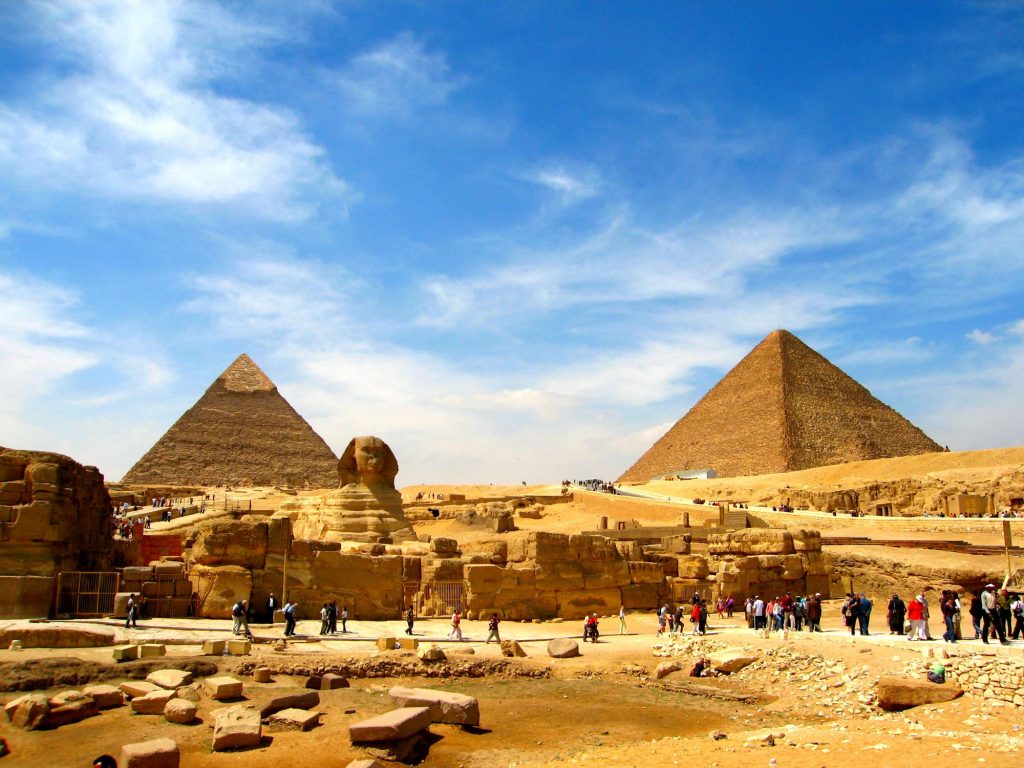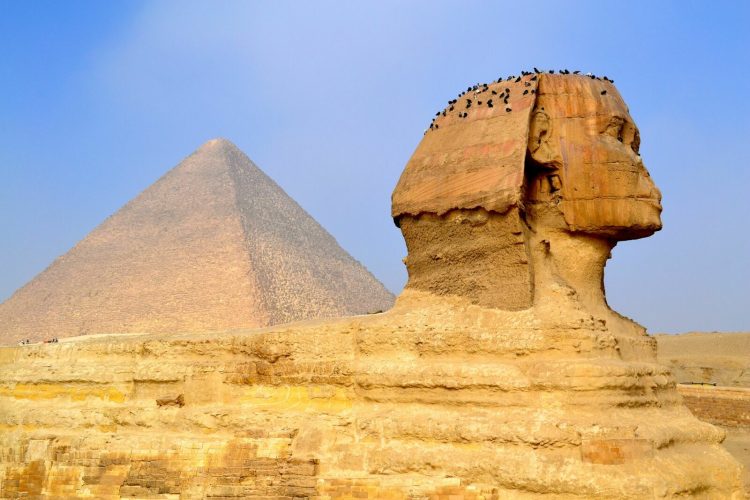In the vast Sahara Desert stands one of the most mysterious structures in human history – the Egyptian pyramids. These towering and spectacular buildings bear witness to the glory of ancient Egyptian civilization, but also leave endless mysteries for later generations. This paper will deeply analyze the charm and mystery of Egyptian pyramids from the historical background, architectural features, cultural significance and other aspects.
I. Historical background and architectural features
The construction of Egypt’s pyramids began in the 27th century BC during the Third Dynasty, when pharaohs began to build mausoleums in pursuit of immortality. These pyramids not only served as luxurious tombs for the pharaohs, but also as symbols of their power and status. Among them, the most famous is the Giza pyramid group, including the pyramid of Khufu, the Pyramid of Kafra and the pyramid of Menkara.
The architectural features of the pyramids are unique. Taking the pyramid of Khufu as an example, it was originally 146.5 meters high, about 230 meters long at the bottom, and was made of 2.3 million boulders, with an average weight of about 2.5 tons per stone. Such a huge project, in the ancient times without any modern mechanical equipment, its construction difficulty can be imagined. The complex internal structure of the pyramid, including burial chambers, passages and sacrificial chambers, fully demonstrates the extraordinary wisdom of ancient Egyptian architects.

Second, cultural significance and status impact
The Egyptian pyramids played an important role in ancient Egyptian civilization. They are not only the tombs of the pharaohs, but also the concentrated embodiment of ancient Egyptian religion, culture and art. The construction of the pyramids incorporated the ancient Egyptians’ unique understanding of life and death, eternity and mystery. Through the pyramids, we can glimpse the hierarchy, religious beliefs and aesthetic concepts of ancient Egyptian society.
The pyramids had a profound influence on later generations. During the European Renaissance, many artists and architects drew inspiration from the geometry and proportions of the pyramids and applied them to their own works. In addition, the pyramids have inspired the curiosity of countless explorers and archaeologists, who have embarked on treasure hunting trips to explore the mysteries of the pyramids.
Literature, art and religious applications
Pyramids also have a wide range of applications in literature, art and religion. In ancient Egyptian frescoes, sculptures and papyrus texts, the image of the pyramid is common. They were depicted as steps to heaven, symbolizing the Pharaoh’s communication with the gods. The pyramids also play an important role in religious rituals and are believed to have been the residence of the pharaohs after their ascension to heaven.
In the later literature, the pyramid has become a symbol full of mystery. Many writers have created a large number of popular works based on the pyramids, such as Agatha Christie’s detective novel “Death on the Nile” and so on. These works further deepen the mysterious impression of the pyramids in the minds of the world.
Iv. Mysterious charm and example display
The unique charm and mystery of the Egyptian pyramids stems in large part from their unsolved mysteries. How the pyramids were built remains a mystery. Although scholars have proposed various hypotheses, none can fully explain how this miraculous structure was born thousands of years ago.
Another compelling mystery is the “air passage” inside the pyramid. The function of these channels has been puzzling, and some scholars have suggested that they may have been designed for ventilation or cooling, but this idea has not been supported by hard evidence.
Inside Khufu’s pyramid is a mysterious chamber known as the “Queen’s Tomb.” This chamber is located on the south side of the pyramid, far from the main chamber. Historians differ on the purpose of the tomb and the identity of its owner.
It is these unsolved mysteries that make the Egyptian pyramids exude endless charm. Every year, thousands of tourists come here, eager to witness this wonder of the world and explore its secrets.

V. Inheritance and development
Over time, the Egyptian pyramids have gradually become a symbol of Egyptian culture and history. In order to protect these precious cultural heritage, the Egyptian government has taken a series of measures, including regular maintenance of the pyramids, enhanced security monitoring and public education campaigns.
Egypt has also actively promoted the diversified development of the pyramids in the fields of tourism, culture and scientific research. For example, the Egyptian government cooperates with archaeological institutions around the world to carry out archaeological excavations and research on the pyramids. Such cooperation not only helps to reveal more secrets of the pyramids, but also promotes international cultural exchanges and cooperation.
In modern society, the image of Egyptian pyramids is also widely used in various fields, such as movies, animations, games and so on. These works let more people understand the charm of the pyramids, and further inherit and develop Egyptian culture.
Vi. Conclusion
As a treasure in human history, the Egyptian pyramids bear the splendor and mystery of ancient Egyptian civilization. Through in-depth understanding of the historical background, architectural features, cultural significance and other aspects of the pyramid, we can better understand the unique charm of this world wonder. The inheritance and development of pyramids in the later generations also provide us with a valuable perspective on the evolution of human civilization. Let’s continue to explore the mystery of the pyramids and feel the breadth and depth of ancient Egyptian culture.





















